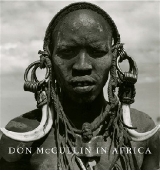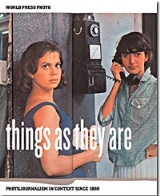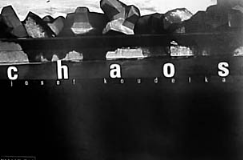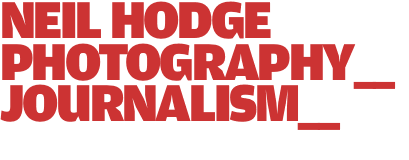Site created by Amplitude. |
||
Don McCullin in Africa review
Don McCullin in Africa, Don McCullin, Jonathan Cape – £35
Things As They Are, Mary Panzer, Chris Boot – World Press Photo, £45
Chaos, Josef Koudelka – Phaidon, £45
5 Masters of Photography
5 Great Women Photographers
5 Experimental Photographers
5 Great Documentary Photographers
5 Pioneers of Photography – Phaidon, £17.85 per set
It is bizarre that a continent that boasts so many diverse countries, cultures, landscapes, religions and colours should be so poorly represented photographically.
There are typically only four kinds of photography books relating to Africa – landscapes; war, famine, and death; tribal heritage; and wildlife. Even the world’s best photographers and photojournalists seem flummoxed over the question of what else there is to photograph.
Don McCullin’s book – Don McCullin in Africa – is no exception. As one would expect from a man regarded as one of the greatest photojournalists ever produced, the compositions and black and white prints are impeccable. But it is the subject matter that seems staid.
McCullin’s latest work is the culmination of two years travelling around the tribal lands in Ethiopia and Sudan as part of an assignment for Harpers & Queen, where McCullin’s wife is travel editor. As such, there are plenty of shots of tribesmen with body paint and piercings. The more interesting portraits are those featuring warriors cradling rifles and machine guns (freely available from the war raging in Sudan) contrasted against those pictures of the ritualistic and ancient stick fights.
Ultimately, however, the book is disappointing and does not live up to McCullin’s earlier works on India and the Palestinians. It lacks anything new. George Rodger brought back similar photos of the Nuba tribe over fifty years ago. Do we still need to see them again? Also, McCullin never explains why it is this particular part of Africa and these particular tribes that attract him. As a result, the reader is left wondering what the point of the book is, other than McCullin being in Africa, and a relatively small part of it at that.
McCullin’s work also springs up in Things As They Are – an outstanding 384-page work that presents the story of photojournalism over fifty years from 1955 until today. It takes us from the golden era of the illustrated press – the heyday of Life Magazine and Picture Post, and the moment of the Museum of Modern Art’s defining Family of Man exhibition – to the explosion of digital media in the 21st century.
The history is told through the presentation of 120 magazine features made and published throughout the world, presented in context, therefore revealing how the events of the world, the art of photographers, and the interests of publishers and the press converged on the printed page.
The book traces how photojournalism has developed over time, alongside changing technology, media, fashions in photography- and a changing world. The book is a “who’s who” of the world’s best photojournalists. It includes landmark photo essays by photographers such as Eugene Smith, Walker Evans, Larry Burrows, Sebastião Salgado, Nan Goldin, Martin Parr, Stanley Greene, Philip Jones Griffiths, Henri Cartier-Bresson, and James Nachtwey, each accompanied by an expert commentary. The book includes an introduction that considers the past, present and future of photojournalism, and a timeline of the period illustrated with the iconic winners of the annual World Press Photo awards. While the £45 price tag may put off some readers, it would be a serious error not to buy this book. It is quite simply one of the best photography books to be released this year.
Phaidon has re-released Czech photographer Josef Koudelka’s Chaos, a 112-page black and white monograph cataloguing panoramic eyesores of shattered concrete, twisted metal, pot-holed roads, debris-strewn canals, oil-covered roads, and vandalised, derelict buildings. As with all of Koudelka’s work, each photograph is an arresting image, beautifully composed and printed. The only downside with the book is its size. Weighing in at just under 2.5 kilograms, and 12x17 inches long, the book is not the easiest to handle. Once opened, it has a length similar to an albatross’s wingspan.
There are no such problems with Phaidon’s pocket-sized “55” series (so called because each volume is just 55 pages long), which the publisher has re-issued in bundles of five at a 40% discount. Each box set showcases the work of five related photographers. The sets cover pioneers of photography (including André Kertész), women photographers (including Nan Goldin and Mary Ellen Mark), documentary photographers (such as Lewis Hine and Ed van der Elsken), experimental photographers (including Lázló Moholy-Nagy), and master photographers, such as Eugene Smith.
These are a great introduction to some of the world’s most inventive and celebrated photographers. However, the original appeal of the “55” series was that they were cheap introductions to individual photographers. Bundling them into groups of five for £17.85 might put some customers off despite the discounted price.
“The book is disappointing…McCullin never explains why it is this particular part of Africa and these particular tribes that attract him”



"As with all of Koudelka’s work, each photograph is an arresting image, beautifully composed and printed"
